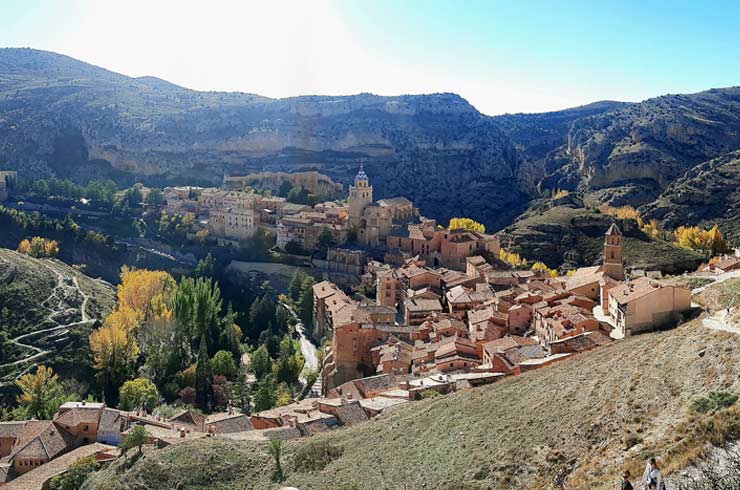Albarracín is much more than just a tourist destination — it’s a medieval gem frozen in time, offering visitors a journey into the past without giving up modern comforts. In this guide, you’ll discover what to do in Albarracín to make the most of every corner of this unique village, considered one of the most beautiful in Spain.
A Medieval Treasure in the Sierra de Albarracín
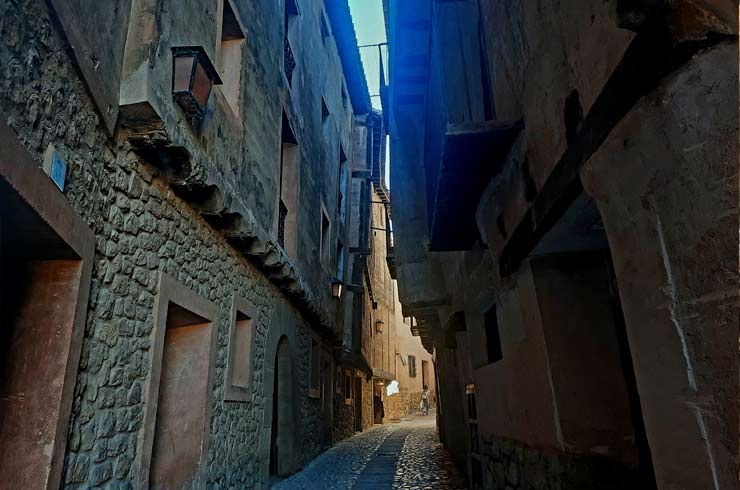
A Village Frozen in Time
Perched on a bend of the Guadalaviar River and wrapped in ancient walls, Albarracín stuns with its unchanged appearance. The reddish houses with wrought iron balconies, cobbled streets, and steep slopes make visitors feel like they’ve stepped into a perfectly preserved historic setting.
This enclave, declared a Historic-Artistic Site in 1961 and proposed as a UNESCO World Heritage Site, has rightfully earned its fame. Its traditional architecture, seamlessly integrated into the rocky surroundings, is a prime example of landscape harmony. Walking through Albarracín is a sensory experience where history, beauty, and authenticity come together.
A Blend of Islamic and Christian Heritage
In the 11th century, Albarracín was the capital of a small independent taifa kingdom before becoming a feudal lordship and eventually joining the Kingdom of Aragon. This rich past has left a visible imprint on its walls, the old fortress, and the narrow streets winding through the old town.
The city wall climbs along the mountainside and can be explored via a path leading to ancient defensive towers. From up there, the panoramic views are breathtaking, revealing the strategic layout of the village atop its rugged terrain.
Albarracín Today: Responsible Tourism and Living Culture
Beyond its architectural charm, Albarracín stands out for its commitment to sustainable tourism and heritage preservation. Local initiatives promote a respectful visitor experience through interpretive trails, cultural events, and a cuisine deeply rooted in the land.
This balance between tradition and modernity makes it one of the most beloved rural destinations in northeastern Spain — perfect for a cultural getaway, a culinary journey, or simply a peaceful escape.
Curious about everything Albarracín has to offer? Join us in this practical guide on what to see, eat, explore, and experience in one of Aragón’s most charming villages.
🧭 If you’re enjoying Albarracín and looking for more places to explore nearby, Zaragoza is the perfect starting point. Discover a variety of unforgettable routes with these day trips from Zaragoza to explore more of Aragón.
How to Get to Albarracín and When to Visit
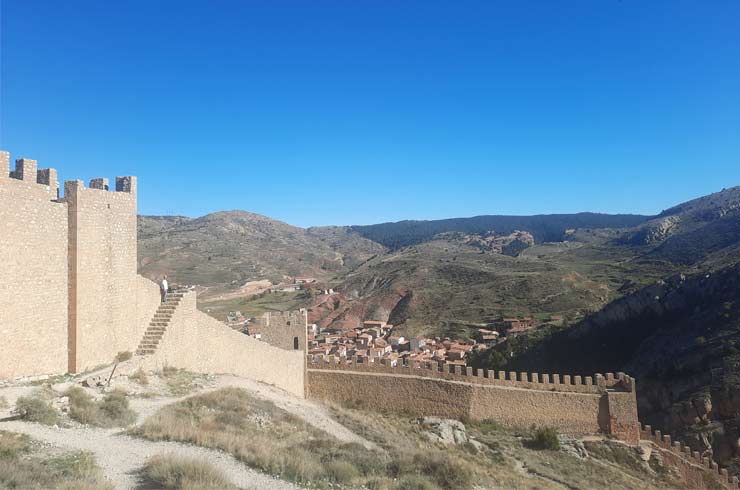
A Strategic Location in the Heart of the Sierra de Teruel
Albarracín is located in the province of Teruel, in the Aragón region, surrounded by the stunning Sierra de Albarracín, a natural area of great scenic value. Despite its remote feel, the village is well connected to major cities in northeastern Spain, making it a perfect spot for weekend getaways or cultural routes through Aragón.
How to Get There from Zaragoza, Valencia, Madrid, or Teruel
- From Zaragoza: Take the A-23 towards Teruel, then continue on the A-1512. The drive takes about 2 hours and 30 minutes.
- From Teruel: This is the most direct route. Just 38 km away, it takes about 40 minutes via a well-paved secondary road.
- From Valencia: Follow the A-23 towards Teruel, then take the A-1512. The trip takes around 2 hours and 15 minutes.
- From Madrid: It’s best to take the A-2, then connect with the A-23 towards Teruel. The drive takes about 3 hours and 30 minutes.
Although Albarracín doesn’t have a train station or direct bus lines from all cities, you can reach Teruel by train or bus and then continue by taxi or rental car. This option works well for travelers without their own vehicle.
When Is the Best Time to Visit Albarracín?
Each season brings a different charm to Albarracín, offering unique experiences:
- Spring: Ideal for enjoying the green pine forests, the Guadalaviar River at full flow, and mild temperatures. Great for hiking and outdoor activities.
- Summer: While it can be warm during the day, the nights stay cool thanks to the altitude. This is the season for festivals and cultural events.
- Autumn: One of the best times to visit. The forests turn golden, tourist crowds thin out, and it’s peak season for mushrooms and truffles.
- Winter: Albarracín has a magical charm under the snow. Perfect for those seeking peace, photography spots, and romantic getaways.
Practical Tips for Your Arrival
We recommend arriving early to avoid peak times, especially on weekends and holidays. Parking is well organized, with free areas on the outskirts and a pedestrian-friendly network of paths leading to the historic center.
If you’d rather not worry about the journey, you can book an organized day trip from Zaragoza. At Rutica 41, we offer exclusive guided tours designed to help you enjoy the surroundings, history, and gastronomy without any logistical hassle.
What to See in Albarracín: Must-See Highlights for Your Visit
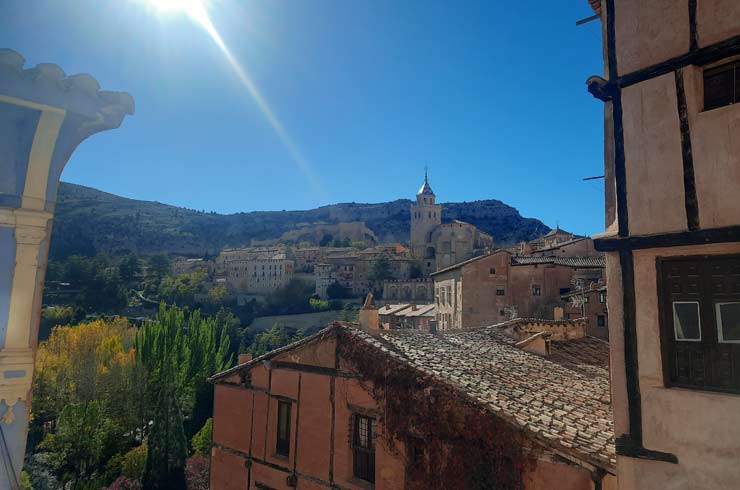
Once you arrive at this incredible medieval enclave, the question inevitably arises: what to do in Albarracín to make sure you miss nothing? This village offers a unique blend of monumental heritage and natural beauty, where every corner tells a story. Here are the must-see spots you simply can’t skip.
1. The Walls and the Castle
The medieval walls of Albarracín are undoubtedly its most iconic feature. They began to rise around the year 965 during the Muslim period and were expanded significantly after the Christian reconquest in the 13th and 14th centuries. Today, you can walk along them and climb up to the Torre del Andador, an old defensive tower that offers one of the most breathtaking views of the village. From above, the scene is picture-perfect: reddish rooftops, winding alleyways, and mountains embracing the historic center.
Nearby stand the remains of the castle of Albarracín, built over an ancient Islamic fortress. Although only ruins remain, exploring it sparks the imagination, helping you picture life centuries ago and understand why this spot was key in defending the territory. Plus, the view of how the village blends with the mountainous terrain is truly striking.
2. The Cathedral of El Salvador
At the lower part of the village stands the Cathedral of El Salvador, a Renaissance gem built between the 16th and 17th centuries atop a former Romanesque church. Its bell tower, decorated with glazed ceramic tiles, can be seen from many spots in the old town and is one of Albarracín’s most recognizable silhouettes.
Inside, surprises abound: Baroque altarpieces, Mudejar plasterwork, and a small museum of sacred art that tells stories from centuries past. The guided tour also includes the former Episcopal Palace — perfect for those wanting to understand why Albarracín was not only beautiful but also a religious and political hub.
3. Strolling Through the Historic Center
If there’s a true way to experience Albarracín, it’s by wandering through its cobbled streets. Roaming without a plan or map feels like time travel. Every corner hides a surprise: reddish houses with wooden beams, secret stairways, tiny squares, covered passages… a real-life storybook setting.
Don’t miss Calle Azagra, the Plaza Mayor, and the Portal de Molina, one of the original gates of the old city walls and now one of the most photographed spots. Every turn reveals a new postcard view. Here, time slows down, inviting you to pause, breathe, and soak it all in.
4. The Viewpoints of Albarracín
If Albarracín is stunning from within, wait until you see it from the outside. Its natural viewpoints are pure spectacle. From the castle, the cathedral, or the municipal park, you’ll enjoy sweeping views of the entire town, the bend of the Guadalaviar River, and the surrounding mountains.
The light changes throughout the day, painting the village in different shades. But if you can, stay for sunset: the reddish stone glows golden, the sky ignites, and the whole scene looks like it came out of a painting. If you love photography, this is your spot. If you love beauty, even more so.
Discovering these places will help you understand why Albarracín ranks among the “most beautiful villages in Spain” — and why it’s also one of the most special, authentic, and moving places for any curious traveler.
Routes and Excursions Near Albarracín
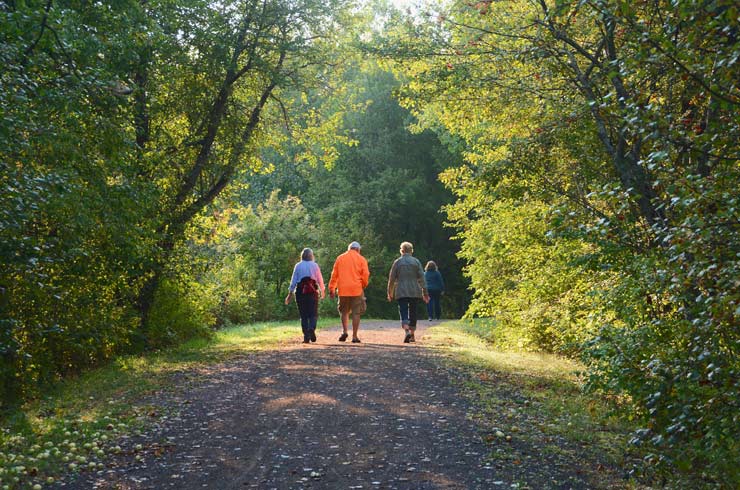
Beyond the charm of its historic center, Albarracín is also the perfect base for exploring some of the most surprising natural and cultural landscapes in inland Aragón. If you’re wondering what to do in Albarracín beyond strolling through the village, these routes and excursions are the perfect answer. Nature, archaeology, and culture come together in itineraries suitable for all types of travelers.
🌿 From the quiet charm of Albarracín to the rich cultural roots of Belchite, there’s much more to uncover. Learn about its dramatic history and local flavors in this guide to discovering the Belchite region through olive oil and heritage.
1. Guadalaviar River Trail and Walkways
One of the most accessible and scenic routes follows the Guadalaviar River along a path equipped with wooden walkways. Starting right from the village, it offers spectacular views of the canyon, riverside vegetation, and striking rock formations.
The route is circular and easy, making it ideal for families, photographers, or anyone looking for a relaxing walk. In just about 2 hours, you’ll discover a wilder, more natural side of Albarracín.
2. Protected Landscape of the Rodeno Pine Forests
Just a few kilometers from the village, the Rodeno Pine Forest Natural Area is one of the region’s most unique landscapes. Here, stone pines mix with large blocks of eroded red sandstone, forming whimsical shapes that look like they’re from another planet.
Besides its scenic value, it’s a great spot for hiking, climbing, or mountain biking, with marked trails and rest areas. Spring and autumn are especially recommended due to the contrast of colors and mild temperatures.
3. Rock Art Route
An archaeological treasure in the heart of nature. Within the Rodeno landscape, you can visit shelters featuring Levantine cave paintings, declared a UNESCO World Heritage Site. These prehistoric murals depict hunting scenes and human figures and are part of a route that combines interpretation and nature.
The trail is free to access and includes informational panels, although guided tours are also available for a deeper experience. It’s a perfect activity for history lovers and fans of ancient art.
4. Excursions and Activities for the More Adventurous
The Sierra de Albarracín is also a paradise for active tourism: mountain biking, 4×4 routes, via ferratas, and birdwatching trails, especially in spring and autumn. Local companies offer activities for all levels, from relaxed outings to more technical adventures.
If you want to combine nature, culture, and comfort, we recommend our private tours from Zaragoza with a specialized guide. At Rutica 41, we organize personalized excursions that include visits to the village, natural surroundings, gastronomy, and local history — designed for you to enjoy Albarracín with all five senses.
Gastronomy in Albarracín: What to Eat and Where
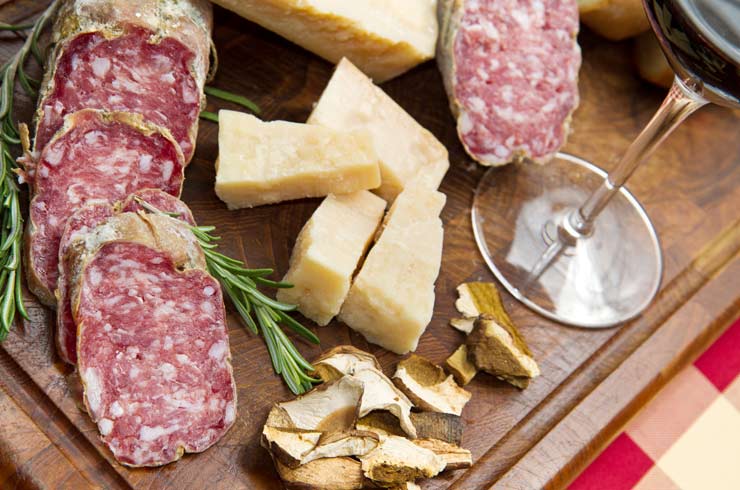
If you’re wondering what to do in Albarracín to delight your taste buds, the answer is simple: dive into the flavors of its mountain cuisine. The gastronomy of Albarracín is as authentic as its architecture — deeply rooted in the land, the climate, and the traditions of the Sierra de Albarracín.
1. Traditional Dishes of the Sierra de Albarracín
The local cuisine has rustic, hearty roots and is based on locally sourced ingredients. Some of the most traditional dishes include:
- Shepherd-style migas: made with bread, garlic, pork belly, and chorizo, served with a fried egg or grapes depending on the season.
- Lamb stew: a classic mountain dish with tender lamb, potatoes, and aromatic herbs.
- Garlic soup: simple but comforting, perfect for cold days.
- Guadalaviar River trout: fresh and delicately flavored, often featured on local menus.
All of this pairs beautifully with Aragonese wines — like those from the Calatayud or Somontano appellations — and local extra virgin olive oil.
2. Local Products: Identity and Quality
Albarracín is also home to distinctive products that reflect its character — available in restaurants and at artisanal shops:
- Albarracín cheeses: especially sheep and goat varieties, naturally aged and awarded at international competitions.
- Sausages and cured hams: made with local pork and cured in the dry, cold mountain climate.
- Black truffle: one of the region’s culinary treasures, harvested in winter and featured in gourmet dishes and tastings.
- Seasonal mushrooms: especially in autumn, when the forest offers a bounty of saffron milk caps, boletus, and other varieties.
Many of these specialties are sold in local stores like “La Despensa de Albarracín” or “Sabores de la Sierra,” which also organize tastings and workshops for visitors interested in the region’s food culture.
Where to Eat in Albarracín
The village offers an excellent range of restaurants and inns, combining traditional dishes with creative takes on local ingredients:
- Tiempo de Ensueño: signature cuisine with local products and a cozy atmosphere — perfect for special dinners.
- El Buen Yantar: well-prepared classic dishes in a rustic, family-style setting.
- La Taba: great for tapas, shared plates, and wine by the glass. Relaxed vibe and great value.
For a more immersive experience, Rutica 41 offers gastronomic tours from Zaragoza that combine a visit to Albarracín with tastings, insights into local products, and stops at unique spots in the Sierra.
Events, Festivals, and Local Traditions
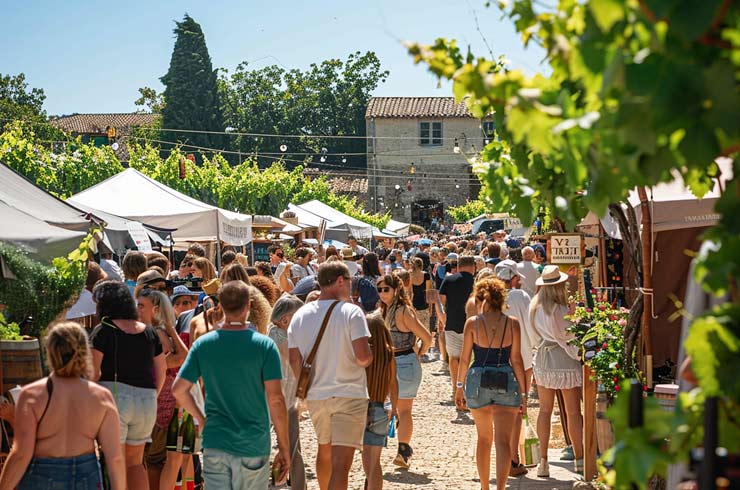
One of the most enriching ways to experience Albarracín is to visit during one of its local festivals. While the village is beautiful year-round, attending its traditional events allows you to discover its deeper identity, meet its people, and take part in ancestral customs that are still very much alive.
Patron Saint Festivities: Devotion and Community
The patron saint festivities of Albarracín are held in early September in honor of the Virgin of the Pillar. For several days, the village fills with color, music, and activities for all ages. Highlights include processions, traditional Aragonese jotas, bull runs and vaquillas, outdoor dances, and cooking contests.
It’s a great opportunity to witness how the tourist-friendly side of Albarracín blends with its more intimate, communal spirit. Residents decorate their balconies, host communal meals, and recreate the warm atmosphere of a truly welcoming village, open to respectful and curious visitors.
Music and Heritage Festival
In summer, Albarracín hosts the Festival de los Mundos, a cultural event featuring concerts, exhibitions, and workshops in historic venues across the town. Organized by the Santa María Foundation of Albarracín, this festival highlights the dialogue between contemporary music and historical heritage, drawing artists and visitors from all over Spain.
Many of the performances take place in courtyards, churches, or noble houses, creating a one-of-a-kind atmosphere. If you’re into cultural tourism with substance, this festival is a perfect excuse to visit Albarracín in July or August.
Medieval Market: A Journey to the Past
In October, the streets of the old town are transformed into a true medieval market. Artisans, musicians, performers, and locals recreate the days when Albarracín was a frontier town full of trade and cultural exchange.
It’s one of the most photogenic times of year, thanks to the detailed staging and the ideal setting. Perfect for families, couples, and history lovers seeking an immersive experience.
Living Traditions All Year Round
Beyond these standout events, Albarracín keeps many living traditions alive throughout the year — from Christmas carols in the high Aragon style, to the solemn processions of Holy Week, to pilgrimages to nearby natural spots.
Taking part in these cultural expressions is a great way to connect with the soul of the place, beyond its picturesque surface. If you’re visiting during special dates, be sure to check with the tourist office or locals to make the most of your trip.
And if you’re looking for a complete experience from Zaragoza, Rutica 41 offers tours that combine heritage, gastronomy, and participation in local events — so you can truly live the culture of Albarracín firsthand.
Guided Tours and Cultural Activities in Albarracín
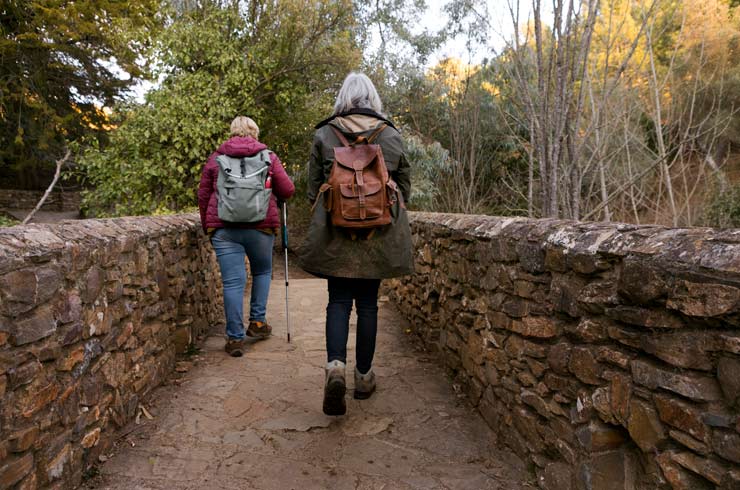
One of the best ways to explore what to do in Albarracín is to join one of its guided tours. Far from being just informational walks, these experiences allow you to dive deeper into the history, art, legends, and identity of this fascinating medieval village.
🏛️ Another gem not far from Albarracín is Calatayud, a city filled with history, architecture and wine. Don’t miss this list of the top things to do in Calatayud to make the most of your visit.
Guided Tours of the Historic Center
The Santa María Foundation of Albarracín organizes regular tours that cover the village’s main landmarks, including the Cathedral of El Salvador, the Episcopal Palace, and the ancient city walls. These tours are led by expert guides and are offered at different times throughout the year.
Along the way, you’ll learn about architectural elements, historical periods, and hidden details that most visitors would miss. It’s a highly recommended experience whether it’s your first time or you want a deeper understanding of Albarracín.
Themed Routes: History, Art, and Legends
Beyond the classic routes, there are also themed tours focusing on specific aspects of local heritage:
- Legends and Mysteries Tour: ideal at dusk, this route uncovers popular tales and myths that still echo through the village streets.
- Mudejar Itinerary: highlighting Mudejar-style artistic elements in Albarracín and their cultural significance.
- Water Route: showcasing the village’s ingenious medieval hydraulic system, including ancient cisterns and fountains.
These tours can be booked through local agencies or the tourist office, and many are available for small groups or personalized visits.
Costumed Tours: A Fun Way to Learn
A particularly engaging option for families or anyone looking for a playful experience is the costumed tour. Actors dressed as historical characters — such as a troubadour, a medieval lady, or a town mayor — guide visitors through the village while recounting anecdotes and reenacting scenes from the past.
These activities take place on specific dates and usually require a reservation, but they’re highly recommended for their ability to entertain and educate at the same time.
Craft Workshops and Cultural Spaces
Albarracín is more than an open-air museum — it also hosts cultural venues and workshops where you can engage directly with its heritage. Highlights include:
- Albarracín Museum: located in the former hospital, it houses archaeological, ethnographic, and artistic collections from the region.
- Blacksmithing or pottery workshops: various local initiatives offer short courses or demonstrations of traditional crafts — ideal for those looking for a creative hands-on experience.
At Rutica 41, we can help you organize cultural day trips from Zaragoza that go beyond the basic tour — combining guided visits with tastings, workshops, or access to special events for a truly complete and high-quality experience.
Tips to Enjoy Albarracín Like a Local

Beyond the monuments and marked routes, Albarracín offers a truly unique experience when explored slowly, with open eyes and an open heart. If you’re wondering what to do in Albarracín to experience it authentically, here are some tips that make the difference between a tourist visit and a truly memorable journey.
1. Avoid Peak Hours and Discover Its Silent Magic
The village welcomes many visitors, especially on weekends and holidays. To enjoy its more peaceful and spiritual essence, we recommend walking around early in the morning or at sunset, when the streets are quieter and the soft light bathes the reddish facades in warm tones. That’s when Albarracín reveals its true charm.
2. Dress Practically and Wear Good Footwear
The village layout is irregular, with steep slopes, stairways, and cobbled paths. Wear comfortable, non-slip shoes — especially in winter or after rain. In summer, bring sun protection and water; in winter, dress warmly, as temperatures can drop sharply after sunset.
3. Support Local Shops
Instead of buying generic souvenirs, go for handcrafted, local products: cheeses, cured meats, honey, pottery, and artistic ironwork. Many small shops are run by the producers themselves, who will gladly share the story behind what they sell. It’s a way to support the rural economy and take home something with soul.
4. Chat with the Locals
The people of Albarracín are friendly and welcoming. Asking for recommendations, showing interest in local traditions, or simply starting a casual conversation can lead you to hidden corners and stories that don’t appear in any guidebook. This human connection is one of the invisible treasures of travel.
5. Respect the Environment and Embrace Sustainable Tourism
Albarracín has preserved its identity thanks to a delicate balance between tourism and conservation. To contribute to this model, follow local rules, don’t enter restricted areas, avoid using drones without permission, and behave responsibly. Remember: you’re in a living village, not a movie set.
At Rutica 41, we offer experiences from Zaragoza designed specifically to promote mindful, respectful, and enriching tourism — where every detail matters and contact with local culture is at the heart of the journey.
Where to Stay in Albarracín and Surroundings
If you decide to extend your stay, you’ll be glad to know that Albarracín offers an excellent range of charming accommodations. Staying here is more than just finding a place to sleep — it’s about prolonging the experience of being in one of the most magical villages in Spain. The key is choosing the right place for your travel style.
1. Boutique Hotels in the Historic Center
Albarracín’s old town is home to boutique hotels that combine respect for traditional architecture with modern comforts. Many are housed in restored noble homes, offering views of the river or the ancient walls.
- Hotel Albarracín: set in a former palace, it offers comfortable rooms and stunning views from its terraces.
- Hotel Casa de Santiago: a historic accommodation with elegant decor and homemade breakfasts — ideal for couples.
- Hotel Doña Blanca: cozy and centrally located, perfect for exploring the village on foot.
Booking in advance is recommended, especially during high season or long weekends.
2. Rural Houses and Sustainable Stays
If you prefer something more independent or closer to nature, there are plenty of rural houses and tourist apartments in Albarracín and nearby villages like Gea de Albarracín, Bezas, or Tramacastilla. These are ideal for families, groups, or travelers seeking peace and flexibility.
Some rural estates also offer activities like stargazing, horseback riding, or craft workshops — providing a deeper immersion into local life.
3. Tips for Choosing Accommodation
- For romantic getaways: choose a charming stay in the old town, where the nighttime atmosphere is truly magical.
- For traveling with kids: opt for rural homes with kitchens and outdoor space — perfect for blending culture and nature.
- For hiking enthusiasts: look for accommodations on the edge of town, right at the start of walking trails.
🌄 After exploring medieval streets and scenic viewpoints, why not connect with nature? The Pyrenees await with spectacular trails and landscapes. Don’t miss this guide to the best hikes and experiences in Ordesa and Monte Perdido National Park.
A Complete Experience from Zaragoza
If you’re traveling with us at Rutica 41, we can help you arrange the most suitable accommodation based on your interests. Our organized getaways from Zaragoza include personalized recommendations, private transport, and the option to integrate gastronomic and cultural experiences into your journey.
Because staying in Albarracín isn’t just about rest — it’s about ending the day in silence, breathing in pure mountain air, and knowing you’ve chosen a place where every night is part of the story.
What to Do Around Albarracín
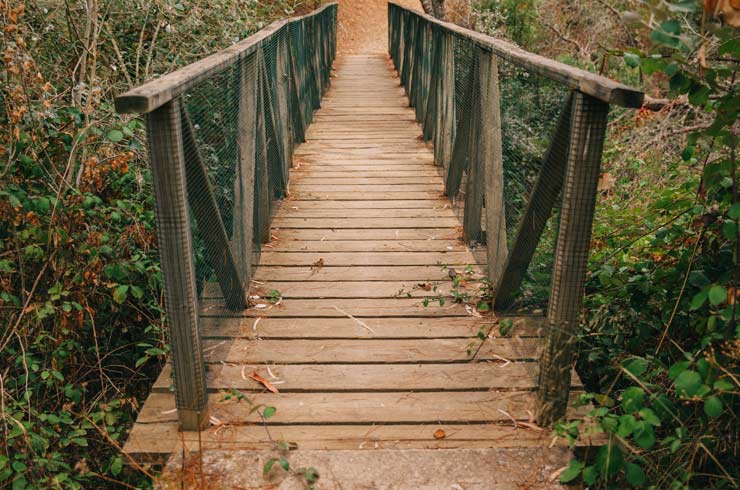
If you’ve already fallen under the spell of the historic center and are wondering what to do in Albarracín beyond its cobbled streets, the answer lies in its surroundings. The region offers a wealth of landscapes, charming villages, and cultural experiences that extend your trip and reveal a surprising, rural side of Aragón.
1. Visit the City of Teruel
Just 40 minutes from Albarracín lies Teruel, the provincial capital and a gem of Mudejar art, declared a UNESCO World Heritage Site. Its cathedral, medieval towers, the Mausoleum of the Lovers of Teruel, and the modern Dinópolis Museum make for a day full of history, architecture, and scientific discovery.
This excursion is perfect for those looking to balance Albarracín’s tranquility with the energy of a small but vibrant cultural city. At Rutica 41, we also offer personalized itineraries that combine both destinations in a single day trip from Zaragoza.
2. The Sierra de Albarracín and Villages with Soul
The mountainous surroundings of Albarracín are a paradise for nature lovers, ethnography enthusiasts, and hikers. Touring the region, you can visit towns such as:
- Bronchales: known for its pine forests and natural mineral springs.
- Gea de Albarracín: home to a Roman bridge, artisan workshops, and a laid-back vibe.
- Tramacastilla and Noguera: perfect for scenic views, hiking trails, and sampling local products.
Each of these villages has its own story, small churches, traditional architecture, and proud, well-preserved rural customs.
Geological Tourism: The Alto Tajo Geopark
Not far away, the Alto Tajo Geopark is one of Spain’s best-kept secrets. Although it lies in neighboring Castilla-La Mancha, many travelers combine it with Albarracín on multi-day routes. Its ravines, karst formations, marine fossils, and spectacular canyons make this natural area perfect for geotourism, landscape photography, and outdoor adventures.
The region features interpretation centers, marked trails, and educational tours. If you’re coming from Zaragoza, you can design a route that includes both Albarracín and the Alto Tajo — with customized experiences available through Rutica 41.
Combining Culture, Nature, and Authenticity
Exploring the surroundings of Albarracín lets you discover one of the richest areas in natural and cultural heritage in inland Spain. Far from mass tourism, here every detour brings a surprise, every local conversation adds depth, and every landscape invites you to pause, breathe, and truly take it all in.
Want to explore these places with the peace of mind of a well-organized trip? At Rutica 41, we’ll take you from Zaragoza to the best of Albarracín and beyond — with expert guides and custom routes tailored to your interests.
Final Recommendations for the Perfect Getaway
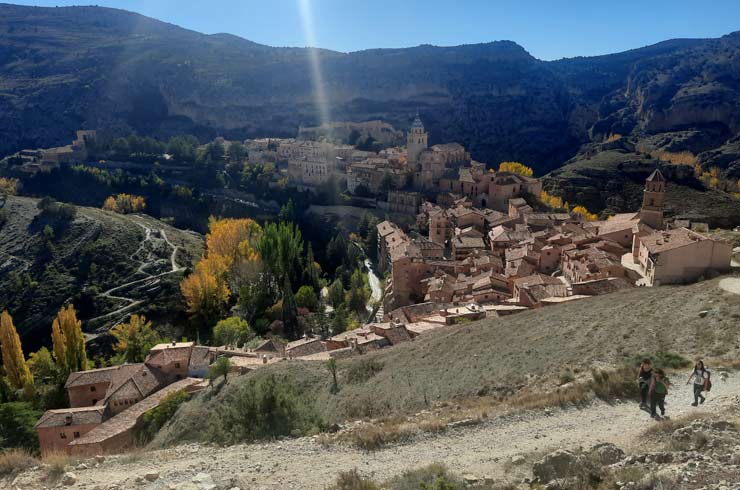
Visiting Albarracín is more than just checking off a destination — it’s about connecting with a place where history, beauty, and rural life merge into a one-of-a-kind experience. Throughout this guide, you’ve discovered what to do in Albarracín, what to see, what to eat, how to take it slow, and what to explore in its surroundings. Now it’s time to put it all into practice.
Whether you’re strolling through its medieval streets, walking the wooden paths along the Guadalaviar River, savoring a wedge of cured cheese by the fireplace, or joining a guided tour at dusk, Albarracín offers a full experience — rich in emotion, authenticity, and natural beauty.
Be sure to plan your visit ahead of time, book your accommodation if you’re staying overnight, and consider our guided tours and excursions from Zaragoza to make the most of your trip without worrying about logistics. Don’t rush — Albarracín is best enjoyed at a slow pace.
Turn Your Getaway into an Unforgettable Experience
At Rutica 41, we design cultural, gastronomic, and nature-based experiences from Zaragoza to Albarracín and across northeastern Spain. With personalized routes, expert guides, and a commitment to authenticity, we help you discover the soul of each destination with all five senses.
Ready to fall in love with Albarracín? We’re waiting for you.

